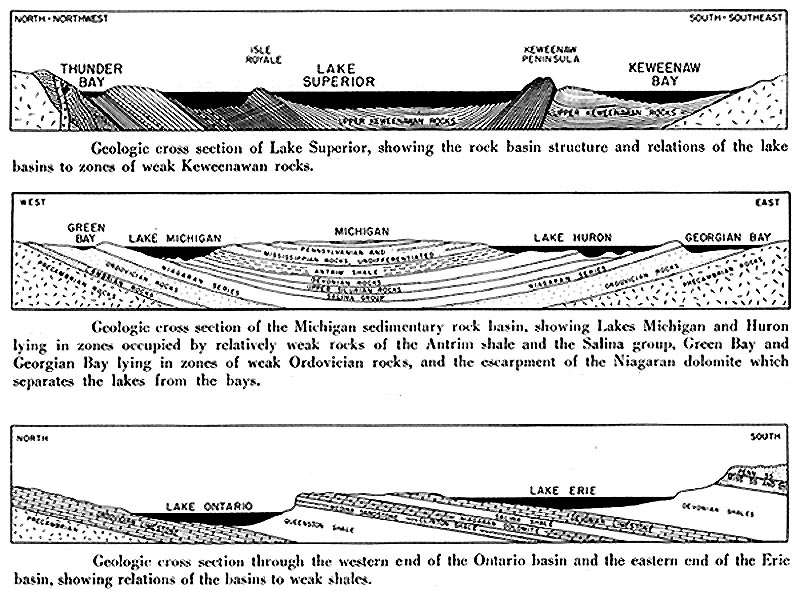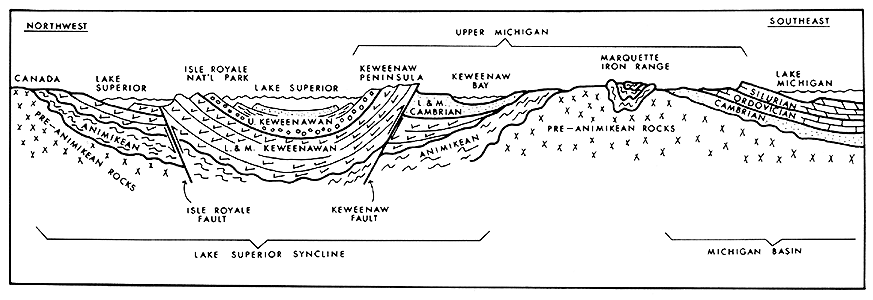GREAT LAKES' ORIGINS
The present-day lake basins of Lakes Superior, Michigan, Huron, and Erie were formed when
large masses of ice gouged out preglacial river valleys. The varying depths of the lakes
are in part attributed to the differences in the thickness of the ice at the time of
glaciation. The greatest depth of Lake Superior is 1,333 ft; of Lake Michigan, 925 ft; of
Lake Huron, 725 ft; and of Lake Erie, 212 ft.
The thick accumulation of late Devonian and Mississippian shales on the
resistant Silurian dolomites around the western, northern, and eastern margins of the
Michigan Basin was very important in determining future topographic features. Because the
resistant dolomites form a bedrock high, they almost completely encircle the basin.
The Pleistocene glacier found the weak spots, evident as gorges cut in
the ancient rocks, as for example the downwarped trough where Lake Superior now lies. They
were not barriers to its progress, but rather they became diversion channels or preferred
pathways for the ice, where it could move more rapidly and erode still further. 
In many places softer and less resistant rocks, such as shale, were
deeply carved and gouged by ice erosion. Thus, the pre-glacial stream valleys cut in the
softer rocks and the edges of the Michigan Basin were widened and deepened into the Great
Lakes. The softer rock masses picked up by the ice were usually ground between the harder
stones and pulverized to fine sediment known as glacial flour or glacial till. Thus,
erosion of the softer shales by streams and later by glaciers resulted in the formation of
Lake Michigan and Lake Huron. Thus the sites of these two lakes were predestined by events
that occurred more than 300 million years ago. The location and shape of Lake Superior was
determined by events in Keweenawan time, some 1,000-1,200 million years ago.

This material has been compiled for educational use only, and
may not be reproduced without permission. One copy may be printed for personal
use. Please contact Randall Schaetzl (soils@msu.edu)
for more information or permissions.